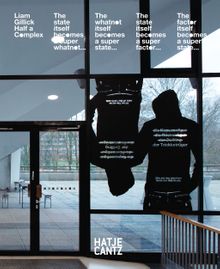| |||||||||||||||||||||||||
ARTIST MONOGRAPHS
|
|
in stock $60.00 Free Shipping UPS GROUND IN THE CONTINENTAL U.S. |
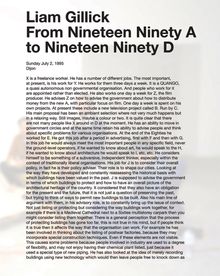 Liam Gillick: From Nineteen Ninety "A" to Nineteen Ninety "D"
Liam Gillick: From Nineteen Ninety "A" to Nineteen Ninety "D"
Published by JRP|Ringier.
Edited by Yves Aupetitallot, Tom Eccles. Text by Yves Aupetitallot, Tom Eccles, Paul O'Neill, Jörn Schafaf, et al.
From Nineteen Ninety "A" to Nineteen Ninety "D" includes the artist's original texts from the 1990s, new essays by Yves Aupetitallot, Tom Eccles, Paul O'Neill and Jörn Schafaff, and contributions from the many collaborative partners and students who restaged his work in exhibitions at CCS Bard, Hessel Museum, Annandale-on-Hudson (2013) and the École du Magasin, Grenoble, in 2014.
PUBLISHER
JRP|Ringier
BOOK FORMAT
Hardcover, 7.25 x 9.25 in. / 240 pgs / 200 color.
PUBLISHING STATUS
Pub Date 11/24/2015
Out of print
DISTRIBUTION
D.A.P. Exclusive
Catalog: FALL 2015 p. 140
PRODUCT DETAILS
ISBN 9783037644058 TRADE
List Price: $39.95 CAD $53.95
AVAILABILITY
Not available
STATUS: Out of print | 00/00/00 For assistance locating a copy, please see our list of recommended out of print specialists |
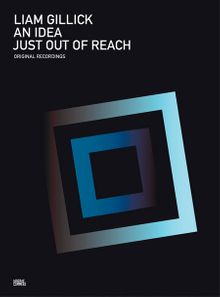 Liam Gillick: An Idea Just Out of Reach
Liam Gillick: An Idea Just Out of Reach
Original Recordings
Published by Verlag für moderne Kunst.
Edited by Robert Eikmeyer.
PUBLISHER
Verlag für moderne Kunst
BOOK FORMAT
CD-Audio, 5.5 x 7.25 in.
PUBLISHING STATUS
Pub Date 4/30/2010
Active
DISTRIBUTION
D.A.P. Exclusive
Catalog: SPRING 2010 p. 130
PRODUCT DETAILS
ISBN 9783941185463 TRADE
List Price: $35.00 CAD $47.50
AVAILABILITY
Out of stock
STATUS: Out of stock Temporarily out of stock pending additional inventory. |
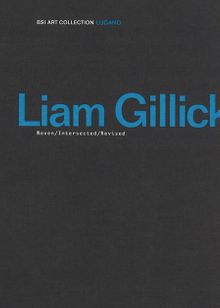 Liam Gillick: Woven/Intersected/Revised
Liam Gillick: Woven/Intersected/Revised
Published by JRP|Ringier.
Text by Luca Cerizza.
PUBLISHER
JRP|Ringier
BOOK FORMAT
Hardback, 5.5 x 7.25 in. / 72 pgs / 40 color / 4 bw.
PUBLISHING STATUS
Pub Date 3/1/2008
Out of print
DISTRIBUTION
D.A.P. Exclusive
Catalog: SPRING 2008 p. 169
PRODUCT DETAILS
ISBN 9783905701470 TRADE
List Price: $15.00 CAD $17.50
AVAILABILITY
Not available
STATUS: Out of print | 00/00/00 For assistance locating a copy, please see our list of recommended out of print specialists |
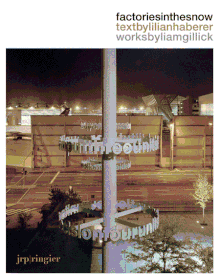 Liam Gillick: Factories in the Snow
Liam Gillick: Factories in the Snow
Published by JRP|Ringier.
Essay by Lilian Haberer.
PUBLISHER
JRP|Ringier
BOOK FORMAT
Paperback, 9.5 x 11.25 in. / 160 pgs / 120 color.
PUBLISHING STATUS
Pub Date 11/15/2006
Active
DISTRIBUTION
D.A.P. Exclusive
Catalog: FALL 2006 p. 119
PRODUCT DETAILS
ISBN 9783905701647 TRADE
List Price: $45.00 CAD $60.00 GBP £20.00
AVAILABILITY
In stock
in stock $45.00 Free Shipping UPS GROUND IN THE CONTINENTAL U.S. |
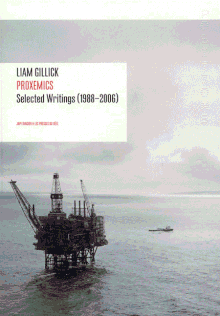 Liam Gillick: Proxemics
Liam Gillick: Proxemics
Selected Essays, 1988-2000
Published by JRP|Ringier.
Edited by Lionel Bovier.
PUBLISHER
JRP|Ringier
BOOK FORMAT
Paperback, 6 x 8.5 in. / 288 pgs.
PUBLISHING STATUS
Pub Date 1/15/2006
Active
DISTRIBUTION
D.A.P. Exclusive
Catalog: FALL 2005 p. 111
PRODUCT DETAILS
ISBN 9783905701012 TRADE
List Price: $22.00 CAD $30.50 GBP £11.00
AVAILABILITY
Out of stock
STATUS: Out of stock Temporarily out of stock pending additional inventory. |
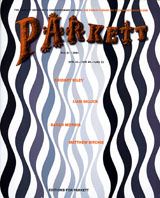 Parkett No. 61 Bridget Riley, Liam Gillick, Sarah Morris, Matthew Ritchie
Parkett No. 61 Bridget Riley, Liam Gillick, Sarah Morris, Matthew Ritchie
Published by Parkett.
Artwork by Bridget Riley, Liam Gillick, Sarah Morris, Matthew Ritchie.
PUBLISHER
Parkett
BOOK FORMAT
Paperback, 8.25 x 10 in. / 250 pgs / illustrated throughout.
PUBLISHING STATUS
Pub Date 6/2/2001
Active
DISTRIBUTION
D.A.P. Exclusive
Catalog: SPRING 2001
PRODUCT DETAILS
ISBN 9783907582114 TRADE
List Price: $32.00 CAD $42.50
AVAILABILITY
In stock
in stock $32.00 Free Shipping UPS GROUND IN THE CONTINENTAL U.S. |
